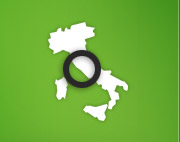History of Lazio
Nucleus of the Roman Empire
Lazio, whose name probably goes back to the Latin word "latus" (wide, flat land), was inhabited early on by native inhabitants and Greeks. From the 8th Century on, the Etruscans exercised a strong influence on the region - Rome was founded and had grown to be a regional power. In the following centuries, Lazio, with its capital Rome, became the centre of a world empire. With the fall of Rome decay, destruction, and the Christian church dominated the history of today’s province. From 1870 on, Lazio was a part of the Kingdom of Italy.
Early history and prehistory
Since the Bronze Age, traces of settlement have been found in the region known today as Lazio. Ancient Greeks knew the settlements of Lazio and probably traded with them. The name Lazio (also called Latium) is probably derived from the Latin word "latus" (term for "far" and "flat land") or an earlier Indo-term. From the 8th Century B.C. on, the Etruscans from the neighbouring region of Etruria (modern Tuscany) had a strong influence on Lazio, whose settlements and cities defended themselves against the Etruscans for a long time before they were defeated by the newly established centre of power in Rome.
The Rise of Rome
With the founding of Rome, a new political and military centre developed in Lazio. The non-Etruscan cities under the leadership of Alba Longa, where the Latin language originated, were subjected by Rome and the city rose steadily and rapidly to become a regional and, in the end, a world power. Lazio became the predominant province and also included present-day Campania. With the introduction of Christianity as the state religion and the establishment of the first Pope, the Catholic Church finally assumed power in Rome.
From the Papal States to the Republic
After the fall of the Western Roman Empire, noble families and the Pope ruled the province of Lazio. With the rise of the Vatican, Lazio eventually became a political union with the Papal States and the Vatican extended its temporal power over the whole of central Italy. After an initial defeat by Napoleon, the Pope finally had to accept the unification of Italy and Lazio was incorporated into the Kingdom of Italy in 1870.


Tweet